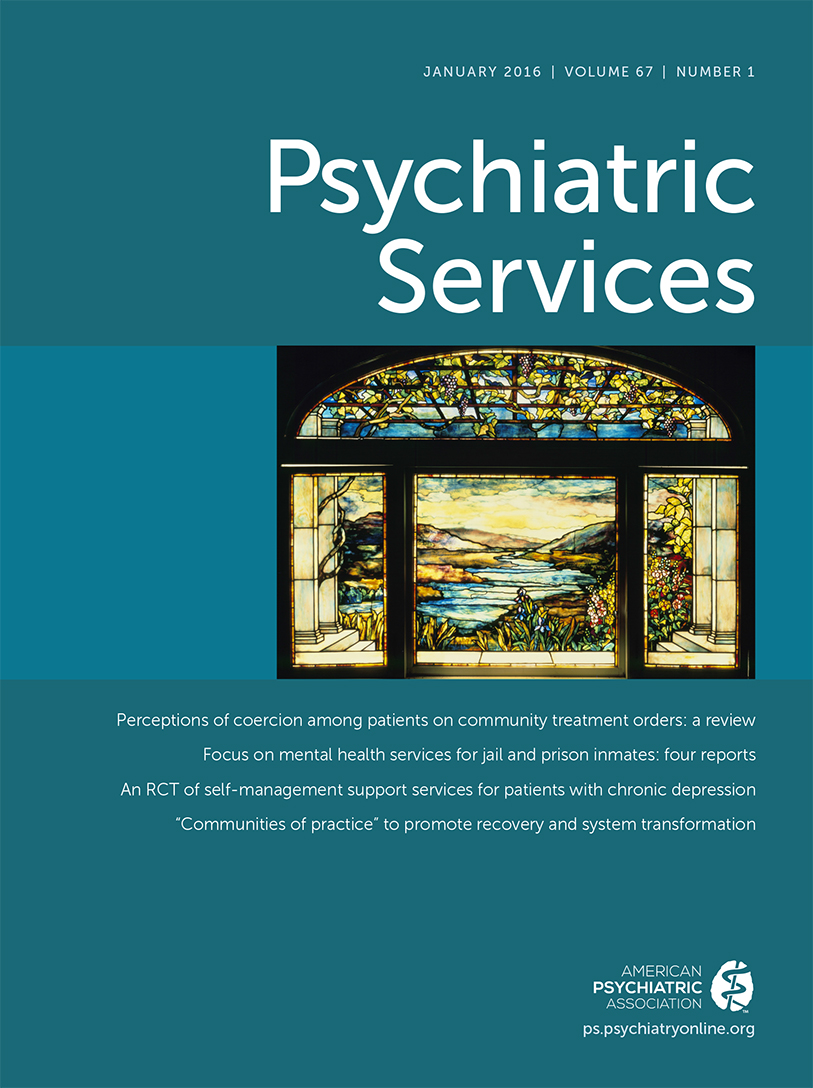This Month’s Highlights
CTOs and Patients’ Perception of Coercion
Court-ordered outpatient treatment for psychiatric patients who lack insight into their illness and do not adhere to prescribed treatments has long been controversial, primarily because of its coercive nature. In recent years, researchers have examined community treatment orders (CTOs) from the perspective of patients, with the goal of developing interventions that are more patient centered and recovery focused. This month’s lead article reviews such research, focusing on patients’ perception of coercion. Katherine M. Francombe Pridham, M.S.W., and colleagues examined findings reported in 23 research articles from 14 studies conducted in seven countries. The authors found that although patients with a CTO are more likely to feel coerced than voluntary patients, their perception of coercion varies with contextual factors, such as the presence of other forms of coercion in their lives and their sense of fairness about initiation and enforcement of CTOs. “Given their involuntary nature, CTOs are a clear target for ethical debates on coercion in psychiatric practice,” the authors conclude. However, recent research points toward steps that can be taken to mitigate patients’ perception of coercion (page Original article: 16). In a Taking Issue commentary, Joseph P. Morrissey, Ph.D., notes that outpatient commitment is not a failsafe mental health solution to complex social problems and that funding must be directed to restoring intensive and high-quality community services (page Original article: 1).
A Primary Care–Based Intervention for Chronic Depression
Chronic depression—experienced by an estimated 3% of the U.S. population at any given time—exacts a heavy toll in terms of poor health, impaired psychosocial and work functioning, feelings of hopelessness, and suicide. Researchers recruited patients with chronic depression from primary care clinics in the Seattle area to test the effectiveness of an 18-month intervention that combined elements of the chronic care model and the recovery model in a single program. The intervention provided an illness self-management skills group, regular telephone or in-person contacts with a care manager, and depression treatment. Evette J. Ludman, Ph.D., and colleagues compared the effectiveness of this intervention with treatment as usual in a randomized trial involving more than 300 patients. Assessments at three, six, 12, and 18 months by interviewers blinded to treatment condition indicated that intervention participants had less severe symptoms and higher recovery scores than those receiving treatment as usual, and were less likely to be depressed and more likely to be much improved (page Original article: 29).
Focus on Treatments for Inmates
Four reports examine treatments for inmates of corrections systems, a population with high rates of mental illness. Linda Kersten, M.Sc., and colleagues evaluated START NOW, a manualized, CBT-based program for inmates that focuses on emotion management, interpersonal, and future-focused skills in 32 group sessions. Inmates had nearly 50% fewer citations for rules infractions after participating in START NOW. Those deemed a higher security risk appeared to benefit most (page Original article: 37). Jill Diane Stinson, Ph.D., identified factors that predicted noncompletion of sex offender treatment in a forensic psychiatric sample, including number of arrests, recent physical aggression, and diagnoses of borderline personality disorder, psychosis, and intellectual impairments (page Original article: 43). Stephanie Hartwell, Ph.D., and colleagues examined two-year outcomes in a sample of individuals released from Massachusetts prisons who had received treatment from the prisons’ mental health services while incarcerated. Postrelease arrests were associated with number of previous incarcerations and black race. Protective factors included older age and parole supervision. Clinical symptoms were not related to incidence of arrests (page Original article: 49). Finally, in the Law & Psychiatry column, Kenneth J. Weiss, M.D., and Anish R. Dube, M.D., M.P.H., describe a lawsuit over conditions in the Monterey County Jail in California that resulted in substantial court-ordered reforms, such as drug and alcohol withdrawal screening, suicide assessment, continuation of medications, and reduction of psychic harm caused by isolation (page Original article: 4).
Briefly Noted
The Integrated Care column highlights findings from a literature review that sought to identify promising integrated care approaches to engaging racial and ethnic minority populations in mental health treatment (page Original article: 13).
The Best Practices column describes how a “community of practice” has been created in Quebec to promote recovery-oriented practices by helping diverse stakeholders work together to share and transfer knowledge; support diverse practices, strategies, and solutions; and influence decision-making bodies (page Original article: 10).
The Open Forum examines five American Christian approaches to mental health and mental illness—pastoral care and counseling, biblical counseling, integrationism, Christian psychology, and the work of the Institute for the Psychological Sciences—that are relevant for contemporary mental health service delivery (page Original article: 107).



